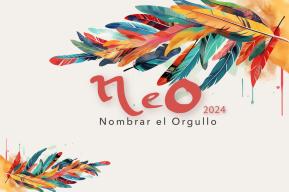Project
Safeguarding West Bengal's Intangible Cultural Heritage

The Rural Craft and Cultural Hubs (RCCH) initiative is a decade long partnership between UNESCO New Delhi and the Department of Micro, Small and Medium Enterprises & Textiles (MSME&T), Government of West Bengal to build sustainable livelihoods in village industries through enhancement of rural Intangible Cultural Heritage (ICH) elements.

Currently the project reaches out to nearly
through its 35 ICH value chains across 20 districts.
Driven by UNESCO’s 2003 Convention for the Safeguarding of the Intangible Cultural Heritage, the project is an unprecedented effort at scale to test, create and showcase a demonstrable model around the framework laid out in the convention that upholds ICH as a “mainspring of cultural diversity and a guarantee of sustainable development”.
West Bengal, like all the other states in India, is home to some of the greatest repositories of living cultural practices and indigenous knowledge systems. These include a broad range of sub-sectors including handicrafts, handlooms, folk and performing arts, khadi and village industries. Their geographical spread across rural areas, indigenous knowhow, cooperative nature and demographic dividend makes them a key structural unit to enable localized sustainable development.
To fulfil this potential, the project introduces and implements need based measures from the 2003 Convention aimed at ensuring the viability of the selected ICH value chains in rural West Bengal, including “the identification, documentation, research, preservation, protection, promotion, enhancement, transmission, particularly through formal and non-formal education, as well as the revitalization of the various aspects of such heritage”.
Through its initiatives, the Rural Craft and Cultural Hubs project addresses the need for safeguarding West Bengal’s living heritage, by ensuring that the associated skills and knowledge are transmitted to future generations so that it can be a vector of sustainable development, in line with the United Nations 2030 Sustainable Development Agenda.
Until 2023, the project had successfully launched safeguarding initiatives for more than 25 ICH elements through design-led capacity building and cross-generational transmission, the establishment of 14 rural ICH centers and community museums with convergence based investment from the Government of West Bengal and enabled the setting up of over 50 new rural enterprises, owned and operated by community members through systemic institution building, running sustainable and creative commercial micro-businesses.
Additionally, several benefits were evidenced at the local ecosystem level in the villages of the project intervention such as improvement in village infrastructure, reduction in income inequalities, production of new designs, access to technology, creation of new markets, increase in tourist footfall, and international exposure. There was also increase in awareness and recognition for ICH forms including accreditation of six Geographic Indications namely Patachitra, Dokra, Chau Mask, Wooden Mask, Madur Weaving and Terracotta.
The Rural Craft and Cultural Hubs project, currently in its tenth year, has demonstrated that when traditional ICH is appropriately interfaced with technical, capacity market and entrepreneurship-led intervention, it can become a potent and sustainable tool for poverty alleviation and employment generation amongst the vulnerable rural communities of ICH bearers. It is aligned with the 2030 Agenda for Sustainable Development and serves as a model for leveraging intangible cultural heritage for inclusive growth and community empowerment.
The Rural Craft and Cultural Hubs initiative has transformed the landscape of our creative economy and steered grass-root dynamics for empowering marginalized communities in a holistic way. This project has created a unique model in leveraging cultural heritage for local development and professionalizing traditional skills for livelihood generation.
The project has also taken initiatives towards environmental sustainability by adopting ethical production methods and developing utility-based products made from natural fibres and other eco-friendly materials, setting a precedent for an eco-friendly approach to safeguarding heritage.
Significantly, women have become more involved in traditional arts and crafts, with increased recognition being given to their important contributions to these fields, which was previously disregarded. With 58% of the project beneficiaries being women, there is a strong focus on women empowerment by developing their entrepreneurial skills. The project also emphasises international exposure visits, through which performing artists have been able to showcase their talents not only at the district and state level, but also on international platforms.
The Rural Craft and Cultural Hubs project, currently in its tenth year, has demonstrated that when traditional ICH is appropriately interfaced with technical, capacity market and entrepreneurship-led intervention, it can become a potent and sustainable tool for poverty alleviation and employment generation amongst the vulnerable rural communities of ICH bearers. It is aligned with the 2030 Agenda for Sustainable Development and serves as a model for leveraging intangible cultural heritage for inclusive growth and community empowerment.










